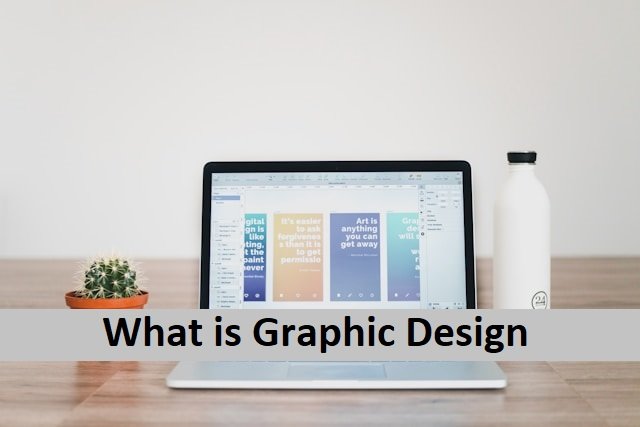Graphic design is an essential part of visual communication that involves the creation of visual content to communicate a message. It is the art of combining text, images, and other visual elements to create a visually appealing design that conveys a message effectively. Graphic design is used in various fields like advertising, marketing, web design, and print media to create brand identity, logos, brochures, websites, and social media posts.
Graphic designers use various design elements like color, typography, layout, and images to create a design that communicates the message effectively. They work with clients to understand their requirements and create designs that meet their needs. Graphic designers use software like Adobe Photoshop, Illustrator, and InDesign to create designs that can be used for both print and digital media.
In today’s world, graphic design has become an essential part of marketing and advertising. It is used to create a brand image that is easily recognizable and helps businesses stand out from their competitors. Graphic design is an ever-evolving field that requires both creativity and technical skills. As technology advances, graphic designers must stay up-to-date with the latest design trends and software to create designs that are relevant and effective.
Fundamentals of Graphic Design
Visual Elements
Graphic design is a visual art that relies on a set of visual elements to create a message or communicate an idea. These elements include:
- Line: the basic building block of graphic design. It can be straight, curved, thick, thin, broken, or solid.
- Shape: a two-dimensional area defined by a boundary. Shapes can be geometric or organic.
- Space: the area around and between the visual elements. It can be positive or negative.
- Texture: the surface quality of a visual element. It can be rough, smooth, shiny, or dull.
- Color: the hue, saturation, and brightness of a visual element. It can create mood, emotion, and contrast.
Principles of Composition
The principles of composition are the guidelines that designers use to organize the visual elements and create a harmonious and effective design. These principles include:
- Balance: the distribution of visual weight in a design. It can be symmetrical or asymmetrical.
- Proximity: the placement of visual elements in relation to each other. It can create a sense of unity or separation.
- Alignment: the arrangement of visual elements along a common axis. It can create a sense of order or chaos.
- Repetition: the use of visual elements consistently and predictably. It can create a sense of rhythm and pattern.
- Contrast: the use of visual elements that are different in size, shape, color, or texture. It can create emphasis and interest.
By understanding and applying these fundamentals, graphic designers can create effective and visually appealing designs that communicate a message or tell a story.
Graphic Design Applications
Graphic design applications are software tools that help designers create visual content for various media types. These tools enable designers to create graphics, illustrations, and layouts for branding and identity, user interface design, print and publication, and motion graphics.
Branding and Identity
Branding and identity design applications help designers create visual systems that represent a brand’s values, personality, and mission. These applications enable designers to create logos, typography, color palettes, and other visual elements that convey a brand’s message. Popular branding and identity design applications include Adobe Illustrator, Sketch, and CorelDRAW.
User Interface Design
User interface design applications help designers create interfaces for software applications, websites, and mobile apps. These applications enable designers to create wireframes, prototypes, and final designs for user interfaces. Popular user interface design applications include Sketch, Adobe XD, and Figma.
Print and Publication
Print and publication design applications help designers create layouts and designs for print media such as magazines, posters, and brochures. These applications enable designers to create typography, images, and other visual elements that are optimized for print. Popular print and publication design applications include Adobe InDesign, QuarkXPress, and Affinity Publisher.
Motion Graphics
Motion graphics design applications help designers create animations and videos for various media types such as social media, websites, and television. These applications enable designers to create visual effects, text animations, and other motion graphics elements. Popular motion graphics design applications include Adobe After Effects, Blender, and Cinema 4D.
Overall, graphic design applications are essential tools for designers to create visual content for various media types. Depending on the project requirements and the designer’s preferences, different applications may be used for different purposes.
Frequently Asked Questions
What are the typical responsibilities of a graphic designer?
Graphic designers are responsible for creating visual concepts that communicate ideas to inspire, inform, and captivate consumers. They develop the overall layout and production design for various applications such as advertisements, brochures, magazines, and corporate reports. They work with clients, art directors, and marketing teams to determine the scope of a project, create designs, and present their ideas to the client.
How does graphic design relate to digital media?
Graphic design is an essential component of digital media. It involves creating visual content that can be used across various digital platforms such as websites, social media, and mobile applications. Graphic designers use software such as Adobe Photoshop, Illustrator, and InDesign to create digital designs that can be easily shared and accessed by consumers.
What can I expect from a career in graphic design in terms of salary?
According to Forbes, the average salary of a graphic designer in the United States is $52,110 per year. However, salaries can vary depending on factors such as experience, education, and location.
What different types of graphic design specializations exist?
There are several specializations within the field of graphic design. These include branding and identity design, web design, user interface design, publication design, packaging design, and motion graphics. Each specialization requires a unique set of skills and knowledge.
How do graphic design principles integrate with modern art?
Graphic design principles are rooted in traditional art concepts such as color theory, composition, and typography. Modern art movements such as minimalism and abstract expressionism have influenced graphic design by emphasizing simplicity, boldness, and experimentation. Graphic designers often draw inspiration from various art movements to create innovative designs.
What level of education is generally required for a career in graphic design?
While a formal education is not always required for a career in graphic design, most employers prefer candidates with a degree in graphic design or a related field. A bachelor’s degree in graphic design typically takes four years to complete and provides students with a comprehensive understanding of design principles, software skills, and industry standards.




